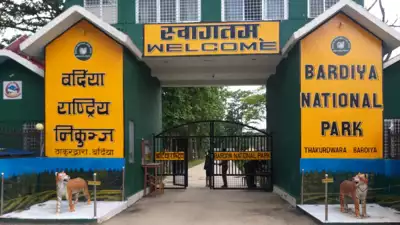UP tiger reserves need community-based wildlife conservation: Experts | News of India – Times of India

PILIBHIT: Wildlife experts have urged local communities near tiger reserves in Uttar Pradesh to be partners. wildlife conservation mitigation programs human-wildlife conflicts.
Mudit Gupta, WWF’s (World Wide Fund for Nature), head of the Terai Arc Landscape (TAL), which spans 30,000 sqkm across Uttarakhand, Uttar Pradesh, and Bihar, made these comments. After a trip to a three-day study of Bardiya National Park to Nepalhe said, “Like the community wildlife programs have produced outstanding results in Nepal, should be followed GET UP with the launch of the Pilibhit Tiger Reserve, which is facing a tiger war and massive human encroachment in the central forest areas.” TOI was an important part of the journey from the Indian side.
In particular, forest and wildlife conservation and conflict mitigation programs in Nepal are jointly implemented by forest departmentthe military, local communities, and international NGOs such as WWF. The Nepal Army is tasked with ensuring the safety and security of forests and wildlife in protected areas.
Unlike in India, the people of Nepal were helped with separate ‘community forests’ to meet the essential needs of firewood, grass, fodder, medicinal plants and hunting small game.
The chief wildlife warden of Bardiya National Park, Ashok Ram, said that with the help of wildlife programmes, the park has achieved a three-fold increase in the number of tigers from 20 to 60 in eight years without a clash with a tiger in the last two years. age. He said: “Human encroachment on primary forests is almost nil because of the deployment of the military to protect forests and wildlife.
He also said that victims of tiger attacks were given immediate financial assistance of Rs 20,000 if there were minor injuries, Rs 50,000 to Rs 5 lakh if they were seriously injured, and Rs 10 lakh if they are killed. “Nepal has provided good compensation arrangements in cases of domestic cattle killings in wild animal attacks and damage to standing crops by elephants through crop insurance schemes. The insurance amount is as low as Rs 1,000 for the amount of policy of Rs 1 lakh of which 50% is provided by local community forest coordination committees,” he said.
Ram added: “The Bardia National Park, which is 968 sqkm, has 125 tigers, 120 elephants and 38 rhinos with a rare tiger in the countryside. This is due to the 70,000 herbivores and the almost zero cultivation of sugarcane near the protected forest areas, which are considered to be hiding places for the monkeys.”
Badai Tharu, the vice-president of the core management group of 38 forest coordination committees operating in the Khata national park that connects the Bardia national park with the Katarniaghat Wildlife Sanctuary of the DTR, said that the committees supported by the government of Nepal with an ongoing fund of Rs 9.5 crore to start welfare and food. programs related to the local community.
“We provided two-way school buses for students who travel between homes and schools for their protection from wild animal attacks. Forest cooperative committees operate many shelters for eco-tourists and earn good profits for the local community. Locals support wildlife conservation programs and reduce conflicts,” Tharu added.
In particular, local communities near tiger reserves in UP lack welfare programs and cooperation with the forest department. There are frequent attacks on local farmers in the context of human-animal conflicts, large-scale encroachment on central forests, illegal logging, and clashes with field forest workers over the collection of forest products. .
#tiger #reserves #communitybased #wildlife #conservation #Experts #News #India #Times #India